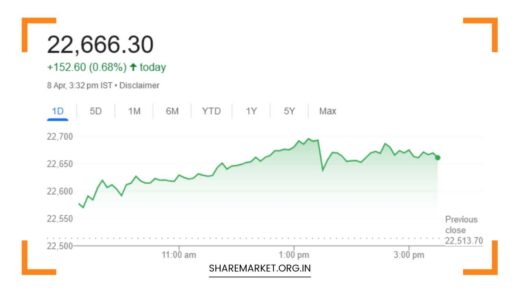Yes Bank: Near ₹16 – Investment Opportunity or Anticipating a Price Drop?

Yes Bank
Yes Bank’s Rollercoaster Ride: From Multibagger to Multiloser
Yes Bank, one of India’s prominent private sector banks, has experienced a tumultuous journey in the world of stock trading.
Investors who had once seen it as a shining star – a multibagger – have been forced to reevaluate their stance as the bank went through a period of severe decline, thus earning the infamous label of a multiloser.
To fully grasp the magnitude of this transformation, it is essential to examine Yes Bank’s trajectory from its early days to its current state of affairs.
In February 2009, Yes Bank shares were trading at an initial price of approximately Rs 10 per share.
This humble beginning was soon followed by a meteoric rise in the subsequent eight years, culminating in the stock price soaring to an astonishing Rs 400 per share in August 2018.
The pinnacle of this ascent was marked by a closing price of Rs 394 on August 20, 2018. During this time, the stock’s performance was nothing short of remarkable, and investors who had faith in Yes Bank reaped substantial rewards from their investments.
Fast forward to the present, and Yes Bank finds itself in an entirely different landscape. The stock has experienced a staggering decline, erasing much of the wealth it had created for its shareholders.
As of the current date, the stock price is trading at approximately 96 percent below the peak closing price of Rs 394 in August 2018.
This means that an initial investment of Rs 1 lakh, which had once grown substantially during the bank’s heyday, has dwindled to a mere Rs 4,000, highlighting the harsh reality faced by many investors who held Yes Bank shares.
Recent Performance and Stock Analysis
Examining the recent performance of Yes Bank shares provides insight into the bank’s current status and its outlook for the future.
Over the past month, Yes Bank’s stock has struggled to regain its footing, experiencing a decline of over 7 percent.
This significant decrease in value has raised concerns among investors, leading to questions about whether the decline will persist or if there’s potential for a reversal in fortune.
In the most recent trading session, Yes Bank shares exhibited a small gain of 0.57 percent, closing at Rs 15.97 on the Bombay Stock Exchange (BSE).
Despite this minor uptick, market experts have been cautious about recommending new investments in Yes Bank.
Brokerage firms, responsible for providing valuable insights into stock performance, have set a target price for Yes Bank that implies a potential downside of more than 12 percent from the current trading level.
This bearish sentiment reflects the apprehension in the market regarding Yes Bank’s prospects.
Adding to the uncertainty, Yes Bank shares recently reached a one-year low, touching Rs 14.10 on October 23. This low point in the stock’s performance underscores the ongoing challenges faced by the bank.
On the other hand, just under a year ago, on December 14, 2022, Yes Bank was celebrating a one-year high, with its stock trading at Rs 24.75.
This stark contrast between the high and low points of the past year highlights the volatility and unpredictability that currently characterizes Yes Bank’s stock.
Assessing the September Quarter
A crucial element in understanding Yes Bank’s current status and its potential for recovery is an analysis of the bank’s performance in the September quarter. During this period, the bank reported financial results that provide valuable insights into its strengths and weaknesses.
One encouraging aspect of the September quarter was the bank’s net profit, which witnessed a substantial increase of 47 percent compared to the previous year, reaching Rs 225 crore.
This boost in net profit could be seen as a sign of resilience and adaptability on the part of the bank, especially in the face of challenging economic conditions.
However, it’s important to note that not all aspects of the bank’s performance were equally positive. Despite the growth in net profit, the return on assets (RoA) experienced a significant decline, dropping from 0.4 percent to 0.2 percent quarter-on-quarter.
This reduction in RoA can be attributed to factors such as margin pressure and an increase in slippages, indicating that Yes Bank is grappling with various challenges that impact its financial stability.
Balancing Act: Strengths and Weaknesses
When delving deeper into Yes Bank’s performance and stability, it becomes evident that the bank exhibits both strengths and weaknesses.
Analyzing these factors can help investors make more informed decisions and understand the context of the recent stock price movements.
On the positive side, Yes Bank has been recognized for its performance in key balance sheet parameters. Metrics such as Common Equity Tier 1 (CET1), Loan to Deposit Ratio (LDR), Net Non-Performing Assets (NNPA), and CASA (Current Account and Savings Account) have shown promising performance.
These factors reflect the bank’s ability to manage its resources and liabilities effectively, demonstrating its commitment to financial stability and prudent risk management.
Nevertheless, not all is rosy in Yes Bank’s financial landscape. One notable area of concern is the growth of operating earnings, often referred to as pre-provision operating profit (PPoP).
Unfortunately, the growth in this critical measure has been rather sluggish, indicating that the bank is facing challenges in expanding its core operational profits.
The slow growth in PPoP suggests that the bank may be experiencing difficulties in generating consistent and sustainable revenue.
Changing Ratings and Analyst Recommendations
The assessment of Yes Bank’s performance and outlook has led to various reactions from brokerage firms and market analysts.
These experts play a crucial role in providing guidance and recommendations to investors, and their views can significantly influence market sentiment and investor behavior.
One noteworthy development is the change in the bank’s rating due to its recent stock price decline. As the stock experienced a correction, resulting in a notable drop of about 10 percent over the past three months, its rating has been modified from “Sell” to “Reduce.”
This change in rating signifies a shift in market sentiment and the perceived risk associated with Yes Bank’s stock.
Investor Caution and Considerations
In light of the complex and dynamic situation surrounding Yes Bank, it is essential for investors to exercise caution and conduct thorough assessments before making any investment decisions.
The bank’s history, with its rapid ascent followed by a significant decline, highlights the volatile nature of the stock market and the importance of diversifying one’s investment portfolio to manage risk.
Moreover, the recent performance and analyst recommendations regarding Yes Bank suggest that the bank is currently facing headwinds and challenges that may impact its stock price in the short and medium term.
Investors should carefully evaluate their investment strategies, consider their risk tolerance, and keep a close watch on developments in the banking sector and the broader economic landscape.
In conclusion, Yes Bank’s journey from being a multibagger to a multiloser serves as a stark reminder of the risks and rewards associated with investing in the stock market.
Understanding the bank’s recent performance, strengths, weaknesses, and the changing market sentiment is crucial for investors to make informed decisions and navigate the unpredictable world of stock trading.

















